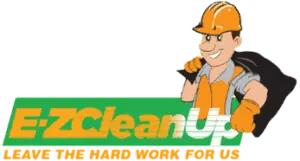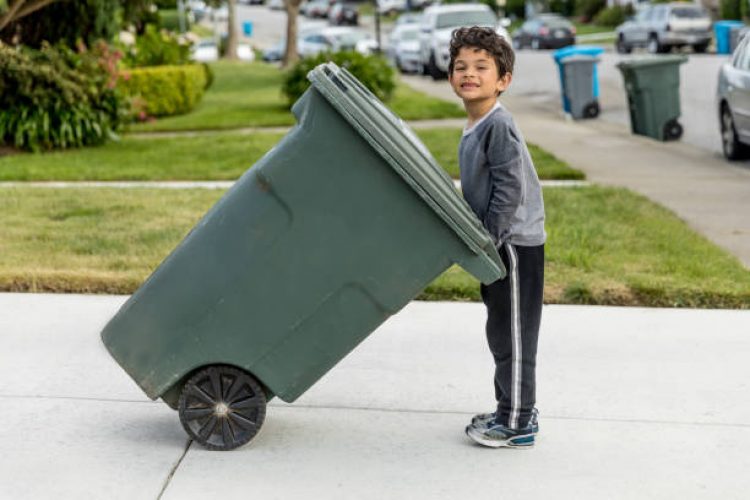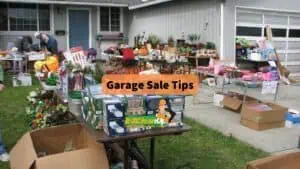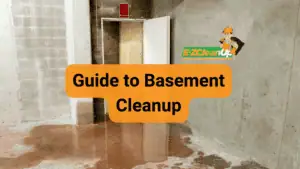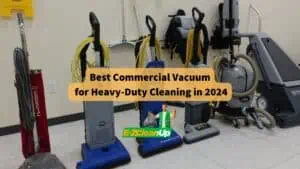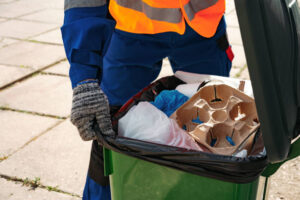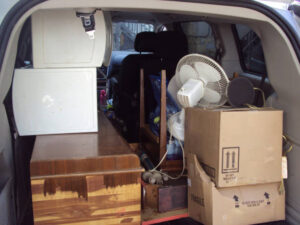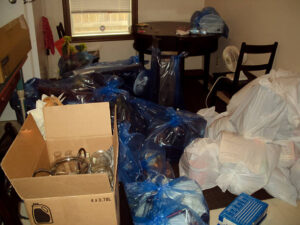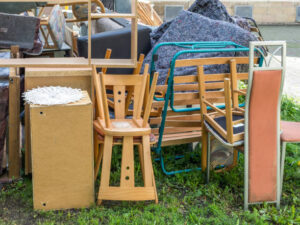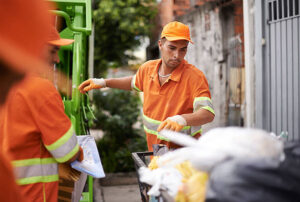Yard maintenance is a rewarding activity that keeps your outdoor space looking pristine, but dealing with the aftermath—piles of grass clippings, fallen leaves, tree branches, and other organic debris—can feel overwhelming. If you’ve ever wondered what to do with all that yard waste, you’re not alone. Americans generate approximately 35.4 million tons of yard trimmings annually, making it a significant component of our waste stream.
The good news? There are numerous hassle-free, environmentally responsible ways to dispose of yard waste that don’t involve endless trips to the dump or watching organic materials pile up in your driveway. This comprehensive guide will walk you through proven methods to manage yard waste efficiently while reducing your environmental impact.
Understanding Yard Waste and Why Proper Disposal Matters
Before diving into disposal methods, it’s important to understand what constitutes yard waste and why proper management is crucial. Yard waste includes grass clippings, leaves, branches, twigs, shrubs, garden residue, and other vegetative materials generated from lawn maintenance and landscaping activities.
The Environmental Impact of Improper Disposal
When yard waste ends up in landfills, it doesn’t simply disappear. Organic material in landfills can produce methane gas as it breaks down, contributing to greenhouse gas emissions. Methane is a potent greenhouse gas at least 28 times more effective than CO2 at trapping heat in the atmosphere over a 100-year period.
Municipal solid waste landfills are the third-largest source of human-related methane emissions in the United States, accounting for approximately 14.4 percent of these emissions in 2022. By keeping organic yard waste out of landfills, you directly contribute to reducing these harmful emissions.
The good news is that awareness is growing. The decline in yard trimmings generation since 1990 is largely due to state legislation discouraging yard trimmings disposal in landfills, including source reduction measures such as backyard composting and leaving grass trimmings on the yard.
Method 1: Composting – Turn Waste Into Black Gold
Composting is one of the most effective and rewarding methods for managing yard waste. This natural process transforms organic materials into nutrient-rich compost that can dramatically improve your soil quality.
Why Composting Works
Composting is one of the most powerful actions we can take to reduce our trash and build healthy soil by turning food scraps and yard trim into compost, transforming waste streams into a beneficial, value-added soil amendment.
How to Start Composting
Setting up a composting system is straightforward:
- Choose Your Location: Select a dry, shaded spot near a water source for your compost pile or bin.
- Create the Right Mix: Combine “green” materials (grass clippings, vegetable scraps) with “brown” materials (dried leaves, small branches) in roughly a 60:40 ratio for optimal decomposition.
- Maintain Your Pile: Turn or aerate your compost regularly to promote decomposition and prevent odors.
- Monitor Moisture: Keep your compost moist but not waterlogged—it should feel like a wrung-out sponge.
Benefits of Composting
The advantages of composting extend far beyond waste reduction:
- Reduces Waste Volume: According to the EPA, composting can reduce yard waste volume by up to 50% while improving soil moisture retention and reducing the need for chemical fertilizers.
- Enriches Soil: Compost improves the structure and health of your soil by adding organic matter, helps the soil retain moisture and nutrients, and attracts beneficial organisms to the soil while reducing the need for pesticides and fertilizers.
- Fights Climate Change: Composting reduces methane emissions by keeping wasted food out of landfills and applying compost to the soil reduces the need for chemical fertilizers, avoiding emissions from their manufacture and use.
In 2018, approximately 22.3 million tons of yard trimmings were composted, more than a five-fold increase since 1990, demonstrating the growing adoption of this sustainable practice.
Method 2: Grasscycling – The Simplest Solution
If you’re looking for the easiest yard waste disposal method, grasscycling might be your answer. This practice involves simply leaving grass clippings on your lawn after mowing instead of bagging them.
How Grasscycling Benefits Your Lawn
Grasscycling facilitates an increase in soil nitrogen content and soil carbon sequestered by the turfgrass ecosystem. The clippings decompose quickly, returning valuable nutrients to your soil.
Leaving clippings on the lawn by grasscycling can have the overall impact of reducing fertilization requirements by 15 to 25 percent or more, with similar savings on water use possible.
Additional Time and Cost Savings
Beyond environmental benefits, grasscycling saves you precious time and money:
- Cuts Mowing Time: Mowing time can be reduced by 50 percent or more, saving you 25 to 30 minutes each time you mow, since the bagging and disposal of clippings is eliminated.
- Reduces Expenses: By returning clippings to the lawn regularly, you can reduce fertilizer use by one application per season and grasscycling does not require the use of lawn bags because the clippings are not being picked up.
Best Practices for Grasscycling
To get the most out of grasscycling:
- Mow regularly when grass is dry
- Keep mower blades sharp for clean cuts
- Sweep or blow any clips that land on sidewalks or driveways back onto the lawn
- Avoid mowing more than one-third of the grass height at once
Method 3: Mulching – Natural Protection for Your Garden
Mulching is another excellent way to repurpose yard waste while providing multiple benefits to your landscape.
What Makes Mulching Effective
Mulching uses shredded leaves and organic materials to protect the soil and retain moisture, helps curb weed growth, conserves moisture, and research from the USDA shows that mulching can cut water consumption in gardens by up to 50%.
How to Mulch Properly
- Use a mulching mower to shred leaves directly onto your lawn
- Collect shredded materials for use in garden beds
- Spread a 2-3 inch layer around plants, keeping mulch away from stems and trunks
- Reapply as the material breaks down over time
Mulching provides a protective barrier that moderates soil temperature, prevents erosion, and slowly releases nutrients as it decomposes—all while eliminating the need to dispose of yard waste elsewhere.
Method 4: Municipal Yard Waste Collection Programs
If composting or grasscycling isn’t feasible for your situation, municipal collection programs offer a convenient alternative.
How These Programs Work
Municipal composting describes local government programs, sometimes known as curbside collection, in which yard trimmings or food scraps are collected from homes and businesses or at drop-off sites, and these programs may be managed, funded, and operated at the level of a town, city, county, or solid waste district.
Many communities offer seasonal or year-round yard waste pickup services. Materials collected through these programs are typically:
- Composted at large-scale facilities
- Converted into mulch for public use
- Processed through anaerobic digestion for energy production
Preparing Yard Waste for Collection
Different municipalities have specific requirements, but general guidelines include:
- Place materials in designated paper yard waste bags or approved containers
- Bundle branches and twigs with biodegradable twine
- Keep materials separate from regular trash and recycling
- Follow size and weight restrictions (typically 50 pounds or less per container)
- Set materials out by the designated collection time, usually by 6-7 AM
Many municipalities offer curbside collection programs specifically for yard waste, and proper separation from regular trash is often required.
Method 5: Drop-Off Sites and Recycling Centers
For larger quantities of yard waste or materials not accepted in curbside programs, drop-off sites provide an excellent solution.
What to Expect at Drop-Off Facilities
Most communities maintain dedicated yard waste facilities where residents can bring:
- Grass clippings and leaves
- Branches and brush
- Christmas trees (seasonal)
- Large volumes of organic debris
Some facilities charge a small fee based on volume, while others offer free drop-off for residents. The materials are professionally composted and often made available back to the community as finished compost or mulch.
What NOT to Do With Yard Waste
Avoiding these common mistakes will protect your local environment and keep you in compliance with local regulations:
Never Dump Yard Waste Illegally
It may be tempting to dispose of leaves or clippings in nearby woods or vacant lots, however, this practice disrupts local ecosystems as plants and shrubs native to the area might struggle to grow under piles of debris, and dumped yard waste could introduce invasive species or diseases.
Avoid Burning Yard Waste
Burning organic debris is harmful to the environment and poses safety risks as it releases harmful pollutants into the air and often violates local fire regulations. Many municipalities have banned yard waste burning entirely.
Don’t Mix Materials
Keep yard waste separate from:
- Regular household trash
- Recyclables like plastic and metal
- Hazardous materials
- Construction debris
- Soil, rocks, or concrete
Contamination can render entire loads of organic material unsuitable for composting, sending it to landfills instead.
Special Considerations for Different Types of Yard Waste
Dealing with Leaves
Fall leaf management can be overwhelming, but you have options:
- Mulch them directly into your lawn with a mulching mower
- Add to compost piles in layers with other materials
- Use as mulch in garden beds after shredding
- Participate in community leaf collection programs
Managing Branches and Woody Material
Larger branches require special handling:
- Bundle in manageable sizes (typically under 4 feet long, 3-4 inches diameter)
- Consider renting a chipper for large quantities
- Check if your municipality offers special bulk collection days
- Some waste facilities accept woody debris for processing into wood chips
Grass Clippings
Fresh grass clippings are valuable for:
- Grasscycling back into your lawn
- Adding to compost piles (in moderation to avoid matting)
- Using as mulch after drying for 1-2 days
- Mixing with carbon-rich materials like leaves
The Long-Term Benefits of Proper Yard Waste Management
Adopting responsible yard waste disposal practices creates ripple effects that extend beyond your property:
Environmental Benefits
In 2018, 22.3 million tons of yard trimmings were composted or wood waste was mulched with a 63 percent composting rate, demonstrating significant progress in diverting organic materials from landfills.
When you keep organic waste out of landfills:
- You prevent methane generation from anaerobic decomposition
- Nutrients are returned to the soil instead of being buried
- Transportation emissions are reduced
- Landfill space is preserved for non-recyclable materials
Economic Advantages
Proper yard waste management saves money at both individual and community levels:
- Reduced need for commercial fertilizers and soil amendments
- Lower waste collection and processing costs for municipalities
- Decreased landfill tipping fees
- Creation of local jobs in composting and recycling industries
Community Health
Compost enables soil to better absorb and hold water, helping to reduce erosion and flooding in heavy rains and retain water during droughts, creating more resilient neighborhoods in the face of climate change.
Creating Your Yard Waste Management Plan
Success with yard waste disposal comes from having a clear plan tailored to your specific situation. Consider these factors:
Assess Your Yard
- How much yard waste do you typically generate?
- What types of materials are most common (grass, leaves, branches)?
- Do you have space for composting or do you need collection services?
Know Your Resources
- Research your local waste collection schedule and requirements
- Identify nearby drop-off facilities and their hours
- Investigate community composting programs
- Understand any fees or restrictions
Invest in the Right Tools
Depending on your chosen methods:
- Mulching lawn mower for grasscycling
- Compost bin or tumbler for composting
- Paper yard waste bags for collection
- Pruning tools for breaking down larger materials
- Leaf blower or rake for gathering materials
Establish a Routine
Consistency makes yard waste management effortless:
- Mow regularly to facilitate grasscycling
- Turn compost piles weekly
- Stay informed about collection schedules
- Process materials promptly to avoid accumulation
Conclusion: Simple Steps to a Greener Future
Managing yard waste doesn’t have to be a hassle. Whether you choose composting, grasscycling, mulching, municipal collection, or a combination of methods, you have numerous options for disposing of yard waste responsibly and efficiently.
The key is finding the approach that works best for your lifestyle, property, and local resources. Start with one method that seems most manageable, then expand your practices as you become comfortable. Every bag of leaves composted, every lawn grasscycled, and every branch properly recycled represents a positive step toward environmental stewardship.
By implementing these strategies, you’re not just solving a yard maintenance problem—you’re contributing to healthier soil, reduced greenhouse gas emissions, and a more sustainable community. The planet will thank you, your garden will flourish, and you’ll enjoy the satisfaction of turning waste into a valuable resource.
Remember, proper yard waste disposal is an ongoing practice, not a one-time event. Stay consistent, remain informed about local programs and regulations, and take pride in knowing that your efforts make a measurable difference in creating a greener, healthier environment for everyone.
References
- U.S. Environmental Protection Agency. (2024). “Yard Trimmings: Material-Specific Data.” Retrieved from https://www.epa.gov/facts-and-figures-about-materials-waste-and-recycling/yard-trimmings-material-specific-data
- U.S. Environmental Protection Agency. (2013). “Composting At Home.” Retrieved from https://www.epa.gov/recycle/composting-home
- U.S. Environmental Protection Agency. (2016). “Basic Information about Landfill Gas.” Retrieved from https://www.epa.gov/lmop/basic-information-about-landfill-gas
- Royal Carting. (2025). “The 4 Do’s & Don’ts of Yard Waste Disposal.” Retrieved from https://royalcarting.com/the-dos-and-donts-of-yard-waste-disposal/
- Michigan State University Extension. “Yard waste practices impact water quality.” Retrieved from https://www.canr.msu.edu/news/yard_waste_practices_impact_water_quality
